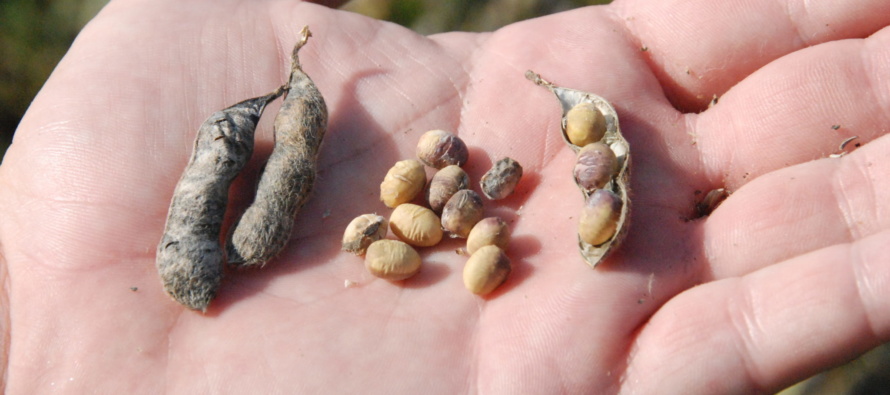Protecting Soybean Seed Quality

Related Articles
- 2010 Soybean And Corn Variety Trial Data 3
- Rice Variety Trial Results For 2010, Plus Rice Research Report 0
- Evaluation of Peanut Prescription Rx Program in Mississippi 0
Latest Tweets
Given the excessive rainfall that has occurred across many areas of Mississippi, there are questions regarding soybean seed quality and application of fungicides to manage this issue. Trials conducted during 2009, which was one of the worst years for seed rotting due to the environment and delayed harvest, suggested that while a fungicide could provide some alleviation of seed rot that the general return-on-investment trend was losing money regardless of one (R3 or R5) or two (R3 fb R5) fungicide applications with 4 fl oz/A of azoxystrobin. Application trials were conducted at three locations during 2009 to address seed quality concerns following the harvest season of 2008. Trials were conducted in Raymond, Starkville and Stoneville using fungicide and insecticide applications with grain analyzed for quality post-harvest. In general, the rainfall and environment that preceded harvest was most conducive for the development of seed rot at Raymond and Starkville. Seed grading conducted from plots that received a fungicide alone (@ R3, R5 or R3 fb R5), fungicide plus insecticide (as diflubenzuron, @ R3, R5 or R3 fb R5) suggested that as a result of the environment the observation of mold damage (fungi) at Raymond averaged 15% and ranged from 0 to greater than 33% damage. The Starkville location received more rainfall and harvest was delayed an even greater period of time. On average, regardless of

Return-on-investment from trials conducted during the 2009 season in Raymond and Starkville where environment played a role in the production of seed rot.
treatment, mold damage was 43% with a range of 13 to 70%. Even though the R5 fungicide treatments tended to reduce mold compared to the non-treated as well as the R3 application, the return-on-investment suggested the applications made to manage stink bugs may have been more beneficial (see figure). Take home message from the 2009 trial work: regardless of treatment, the environment is the main factor involved in reducing seed quality. Neither a fungicide nor insecticide can alter the environment received and since in some cases the environment can be related to duration or period of harvest delay the general rule of thumb is sun and dry weather are most beneficial. In addition, scouting and managing stink bugs appropriately may be more beneficial than a timed fungicide application with regards to maintaining seed quality if the environment delays harvest. But scouting for the presence of the insect is key rather than simply making an insecticide application when no stink bugs may be present. In situations where the weather will allow, a harvest aid application may be beneficial to expedite harvest and minimize additional damage. More information about harvest aids for soybean can be found here.





Let me tell You a sad story ! There are no comments yet, but You can be first one to comment this article.
Write a comment